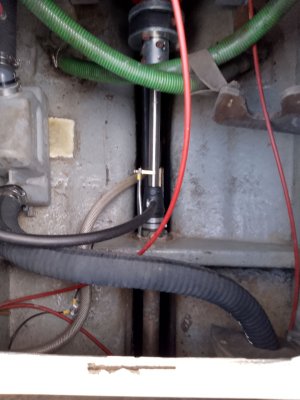davierobb
Active member
A friends motor boat nearly sunk when the Annode disappeared and the mild steel retaining bolt was dissolved.
Boat is now back in the water with a new set of annodes, Rudder, shaft, Hull and metal frame. The starter motor, alternator, bow thruster motor, charger and heater have all been replaced.
I've used a silver chloride reference cell to check the annodes are providing protection and all reading are consistent and considered good, at around -0.90V. We've checked that the readings are consistent regardless of what elements of the system are on off, shore power, batteries, all dc circuits active etc. I'm guessing that we probably fixed the issue when we replaced one of the damaged items.
The question for the forum is, we now have a current of 30ma flowing into the boat bonding circuit from the annode, does this seem correct? This is stable regardless of electrical configuration.
My own boat, eclipse motor sailor has an annode current of around 11ma.
Any informed opinions appreciated.
Boat is now back in the water with a new set of annodes, Rudder, shaft, Hull and metal frame. The starter motor, alternator, bow thruster motor, charger and heater have all been replaced.
I've used a silver chloride reference cell to check the annodes are providing protection and all reading are consistent and considered good, at around -0.90V. We've checked that the readings are consistent regardless of what elements of the system are on off, shore power, batteries, all dc circuits active etc. I'm guessing that we probably fixed the issue when we replaced one of the damaged items.
The question for the forum is, we now have a current of 30ma flowing into the boat bonding circuit from the annode, does this seem correct? This is stable regardless of electrical configuration.
My own boat, eclipse motor sailor has an annode current of around 11ma.
Any informed opinions appreciated.

